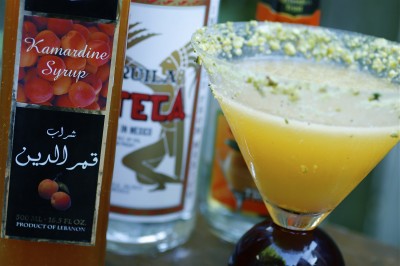
We tried this idea the other day. Wasn't a 100% success, but it might work for you, depending on your grater.
I always have trouble cutting butter into a pastry dough. Scott Peacock says to use your hands (as described in our
cheddar scone recipe here), but that seems to take forever and I always miss a couple of pieces. The easiest way, in my opinion, is a food processor, but then you have a lot of extra cleaning to do.
But here's an idea from a friend: freeze the butter and then use a cheese grater to grate the butter into the dough.

We used a Pampered Chef grater, which was so simple even a two year old could do it. And it worked great, except that the butter melts from friction and collects in the innermost corners of the grater. I'm guessing about 5% of the butter never made it into the dough. So it's not perfect, but it works.
If you used a box grater, you'll have to work a bit harder, and the very last sliver of butter will melt in your hand, but you can just toss that into the dough and cut it in with your hands, pastry cutter, fork, or whatever.
Maybe I just need to find a better pastry cutter?

Or ... and I'm leaning towards this one ... just use the food processor, but to make the clean up worth your while, make a double batch and freeze half of it. That's what we did with the
strawberry shortcakes the other day.

We have shortcake biscuits in the freezer, which take about 15 minutes to thaw before tossing into the oven.

(By the way, I guess I'm the last one to find out that to make homemade whipped cream, all you have to do it take some cream and whip it. Seriously. It's that easy. You can add a wee bit of sugar and vanilla extract if you want, but basically, whipped cream is — get ready for this — cream that has been whipped. Who knew?)
Lots of options ... will have to work on all of them before deciding which one to stick with.
Simple Currant Scones2 cups flour
1/2 cup sugar
(1 tsp sugar for sprinkling over the scones later on)
1 tsp baking powder
1/4 tsp baking soda
1/2 tsp salt
1 stick (8 Tbs) butter (freeze for 30 minutes)
1/2 cup currants or raisins
1/2 cup sour cream
1 egg
Preheat your oven to 400º.
Mix the flour, sugar, baking powder, baking soda, and salt in a 4 quart mixing bowl.
Grate the frozen butter into the dry mixture using a box or cheese grater. Mix thoroughly with your fingers, a fork, or a pastry cutter. (Or, mix the whole thing in a food processor.)
Blend the sour cream and the egg in a measuring cup or small bowl. Stir the wet mixture into the flour, slowly with a fork. Just as lumps start to form, with your hands, press the dough into the bowl to make a ball. Don't worry if the dough doesn't look wet enough — it should still hold together. If not, gently knead it once or twice and try again.)

Pat the dough into a circle on a lightly floured surface, and pat it down to about 3/4 of an inch thickness. Sprinkle with sugar, and then draw a knife through the dough to form eight triangles.

Using a small spatula, place the triangles onto a parchment-lined baking sheet and bake for about 15 minutes, just until the tops are golden brown.
Favorite variation: add lemon zest to the dry mix and sub blueberries for the currants.










